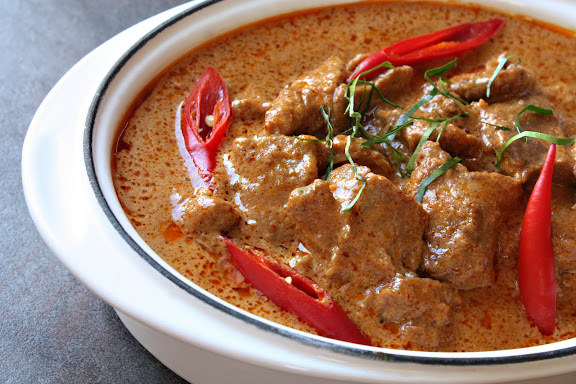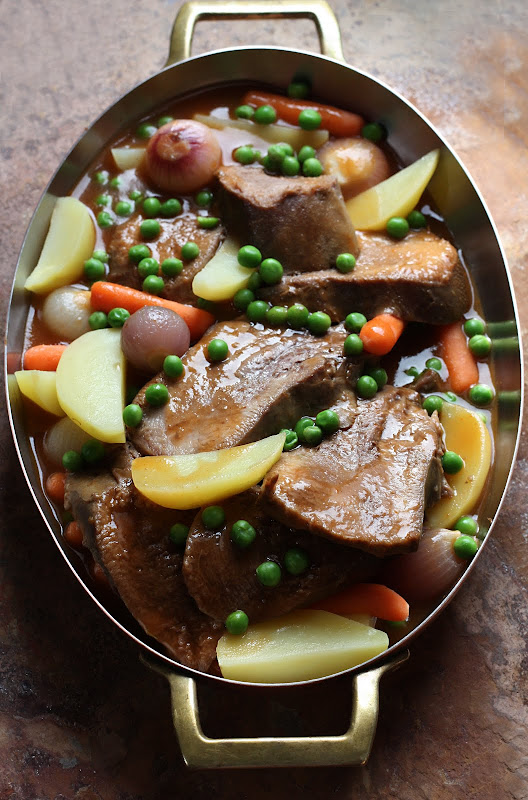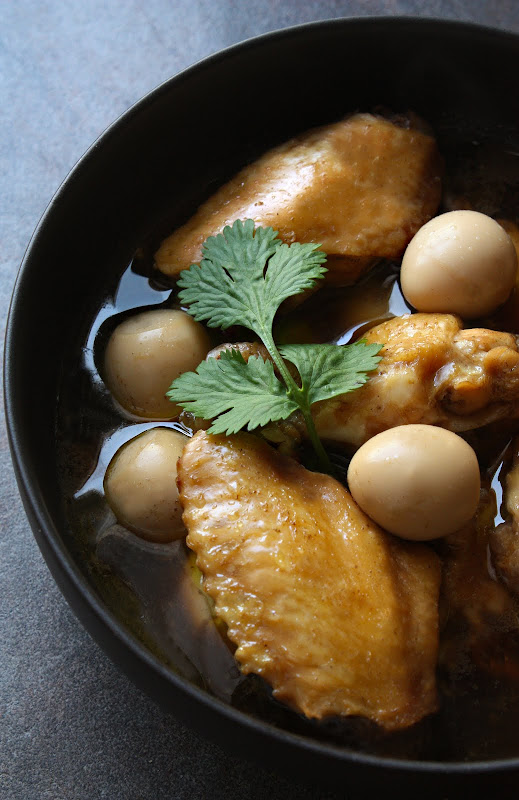
There appears to be two big camps when it comes to how modern-day panaeng curry is supposed to be: one camp prefers their panaeng saucier and more herbal1; one camp goes for a thicker, meatier, and sweeter panaeng with the taste of peanuts more prominent. These two seem to form the opposing ends of a spectrum on which the kinds of panaeng you’d find on the streets of, or at shophouse eateries in, Bangkok fall. This, of course, is entirely based on my own very unscientific observation.
I have always preferred the former since I grew up eating it both at home and at school,2 but I have in recent years come to embrace the richer, more Rendang-like panaeng which seems to be well liked among patrons of Thai restaurants in the US.
If you like the first type of panaeng, please check out my post on panaeng curry with pork and kabocha squash. However, if you like your panaeng more unctuous and nuttier, I believe this beef panaeng curry recipe would better suit your taste. No recipes will give you exactly what you get from your favorite restaurant, but this one should serve you well as a guide. You can always season it with fish sauce and palm sugar to taste; you can also adjust the consistency of the sauce to your liking.
Regardless of which version you prefer, having fresh kaffir lime leaves on hand is essential in creating good panaeng curry. Dried kaffir lime leaves just won’t do.
Panaeng Curry with Beef (พะแนงเนื้อ)
(Serves 8)
3 lbs beef, cut into 1.5-inch cubes (Use the kind of cut you’d use for a pot roast, i.e. rich in collagen, somewhat fatty, and tough. Lean beef will only ruin the dish.)
1 13.5-ounce can of Chaokoh coconut milk
¼ to ½ cup (or 2 to 4 ounces) of Panaeng curry paste depending on your heat tolerance (I use Maesri, but any imported brand will do.)
3 tablespoons of natural, unsweetened peanut butter (I’ve found regular peanut butter to create an off taste and smell, even the ones that say “all natural.” The best type to use is the type with one ingredient listed: peanuts. You can also grind up some plain roasted peanuts.)
6-7 fresh kaffir lime leaves, cut into very thin strips
1-2 Thai long chilies (jalapeño or Serrano will do), cut on a diagonal lengthwise (optional)
Fish sauce
Palm sugar
* In a saucepan, set over medium-high heat, heat up the coconut “head” (the thick part that rises to the top of the can) along with the curry paste, stirring constantly.
* When the mixture starts bubbling up around the edges and the coconut cream starts to separate, stop stirring and let it boil gently.
* Turn the heat up a little and add the beef.
* Stir to make sure the beef is all coated with the curry sauce.
Add half of the coconut “tail” (the remaining thin, watery part) and just enough water to cover the beef.
Add about 1/4 cup of fish sauce and 1 tablespoon of chopped palm sugar to the pot and bring the whole thing to a boil.
Immediately turn the heat down and let the curry simmer gently, covered, for 45-60 minutes. Check on it occasionally to make sure there’s no scorching on the bottom of the pot and that the beef is fully submerged in liquid (you may need to replenish the liquid with more water, bring the pot back to a boil and turn down the heat again to resume a gentle simmer).
After 45 minutes, check to see if the beef is tender enough. If not, simmer a bit more. If so, give it a stir, remove the lid, and let the braising liquid reduce down to desired consistency.
Once that is achieved, stir in the peanut butter, half of the julienned kaffir lime leaves, and the red peppers. Correct the seasoning with more fish sauce and palm sugar as necessary; take the pot off the heat.
Serve the curry, sprinkled with the remaining kaffir lime leaf strips, with steamed jasmine rice.
1 With Thai basil added to it in addition to the essential fresh kaffir lime leaves.
2 About once every two weeks or so, a mild and saucy panaeng curry with pork and sliced long beans showed up on the school’s lunch menu — one of my favorites.
3 You can also grind up some unsalted roasted peanuts, measure out 3 tablespoons, and use that in lieu of the natural peanut butter. They’re essentially the same thing, though.

















